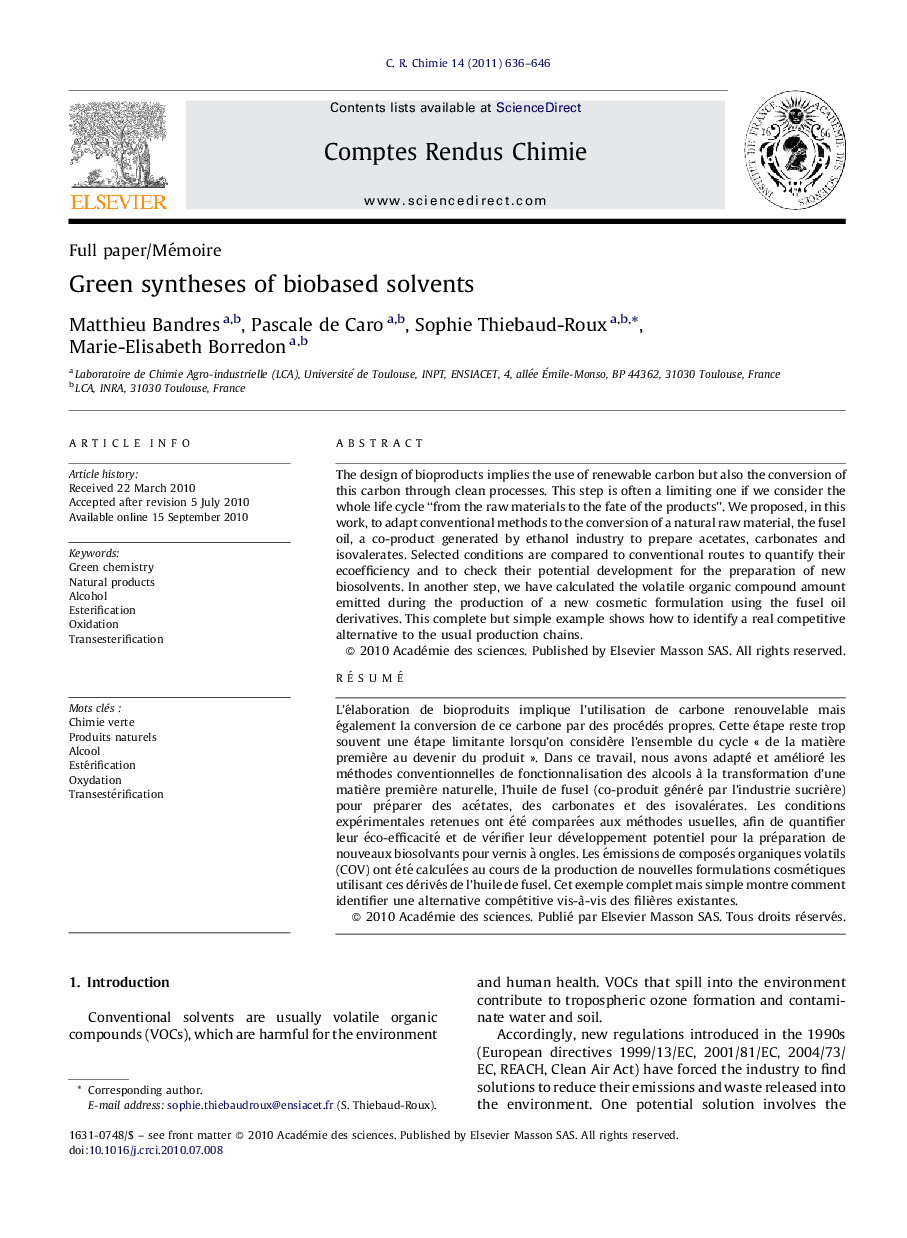| Article ID | Journal | Published Year | Pages | File Type |
|---|---|---|---|---|
| 170958 | Comptes Rendus Chimie | 2011 | 11 Pages |
The design of bioproducts implies the use of renewable carbon but also the conversion of this carbon through clean processes. This step is often a limiting one if we consider the whole life cycle “from the raw materials to the fate of the products”. We proposed, in this work, to adapt conventional methods to the conversion of a natural raw material, the fusel oil, a co-product generated by ethanol industry to prepare acetates, carbonates and isovalerates. Selected conditions are compared to conventional routes to quantify their ecoefficiency and to check their potential development for the preparation of new biosolvents. In another step, we have calculated the volatile organic compound amount emitted during the production of a new cosmetic formulation using the fusel oil derivatives. This complete but simple example shows how to identify a real competitive alternative to the usual production chains.
RésuméL’élaboration de bioproduits implique l’utilisation de carbone renouvelable mais également la conversion de ce carbone par des procédés propres. Cette étape reste trop souvent une étape limitante lorsqu’on considère l’ensemble du cycle « de la matière première au devenir du produit ». Dans ce travail, nous avons adapté et amélioré les méthodes conventionnelles de fonctionnalisation des alcools à la transformation d’une matière première naturelle, l’huile de fusel (co-produit généré par l’industrie sucrière) pour préparer des acétates, des carbonates et des isovalérates. Les conditions expérimentales retenues ont été comparées aux méthodes usuelles, afin de quantifier leur éco-efficacité et de vérifier leur développement potentiel pour la préparation de nouveaux biosolvants pour vernis à ongles. Les émissions de composés organiques volatils (COV) ont été calculées au cours de la production de nouvelles formulations cosmétiques utilisant ces dérivés de l’huile de fusel. Cet exemple complet mais simple montre comment identifier une alternative compétitive vis-à-vis des filières existantes.
